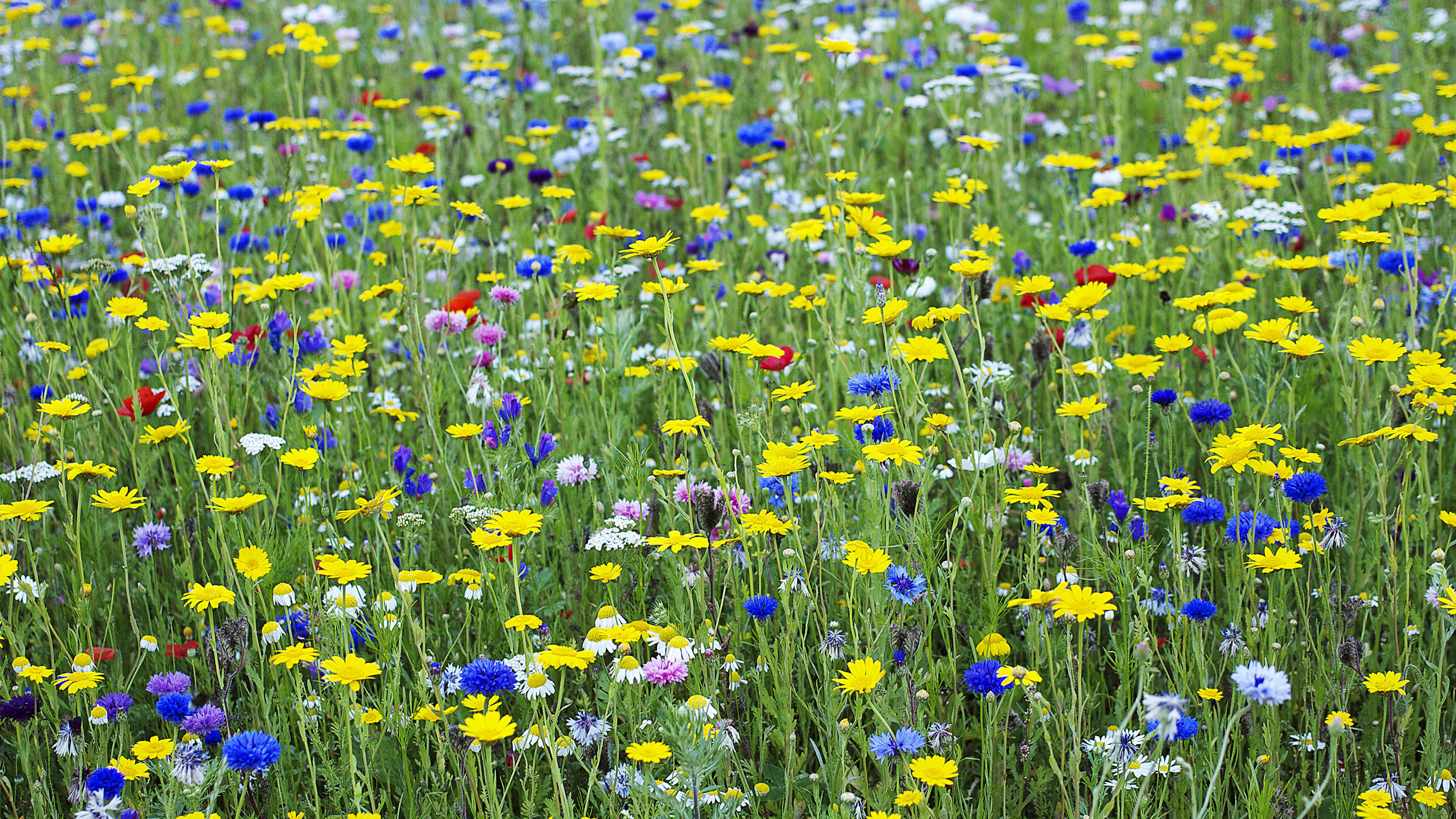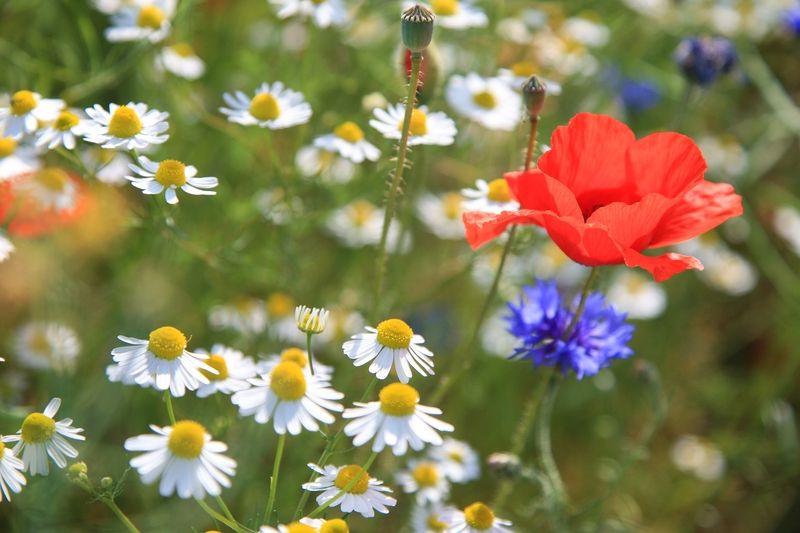Choosing the Right Wildflowers for Your Garden
Selecting the right wildflower species is a crucial step in learning how to sow wild flowers successfully. With so many varieties to choose from, it’s essential to consider the specific growing conditions in your garden. Climate, soil type, and desired bloom period are all critical factors to take into account when choosing wildflowers. For instance, if you live in a region with hot summers, you’ll want to choose wildflowers that are drought-tolerant, such as lupines or cosmos. On the other hand, if you live in a region with cool, wet winters, you’ll want to choose wildflowers that thrive in moist conditions, such as forget-me-nots or bluebells. To research and choose the best wildflowers for your specific needs, start by consulting with local nurseries, gardening experts, or online resources. You can also observe the wildflowers that grow naturally in your area and take note of their characteristics. By taking the time to select the right wildflowers for your garden, you’ll be well on your way to creating a beautiful and thriving wildflower garden.
Preparing the Soil for Wildflower Success
Before learning how to sow wild flowers, it’s essential to prepare the soil for optimal growth. Wildflowers require a well-draining, fertile soil that is free of weeds and debris. To achieve this, start by testing the soil pH to determine if it’s acidic, alkaline, or neutral. Most wildflowers prefer a slightly acidic to neutral soil pH, ranging from 6.0 to 7.0. If your soil pH is outside this range, you can amend it with organic matter such as compost or well-rotted manure. Next, remove any weeds and debris from the soil, as these can compete with your wildflowers for water and nutrients. Use a garden fork or spade to gently loosen the soil, and then remove any weeds or debris by hand or with a tool. Finally, add organic matter such as compost or well-rotted manure to the soil to improve its fertility and structure. This will provide your wildflowers with the necessary nutrients and support for healthy growth. By taking the time to prepare the soil properly, you’ll be well on your way to creating a thriving wildflower garden.
The Art of Sowing Wildflower Seeds
Once you’ve prepared the soil and chosen the right wildflower species for your garden, it’s time to learn how to sow wild flowers. Sowing wildflower seeds requires some care and attention to detail, but with the right techniques, you can ensure a successful and thriving wildflower garden. To start, scatter the wildflower seeds evenly over the prepared soil. Use a gentle scattering motion to distribute the seeds, taking care not to overcrowd the area. Next, use a rake to gently rake the soil, covering the seeds with a thin layer of soil. This will help to retain moisture and prevent the seeds from being washed or blown away. Finally, water the soil gently but thoroughly, making sure to keep the soil consistently moist during the germination period. It’s also essential to sow the seeds at the right depth, as specified on the seed packet. Sowing the seeds too deeply can prevent them from germinating, while sowing them too shallowly can leave them vulnerable to drying out. By following these simple steps, you can successfully sow your wildflower seeds and enjoy a beautiful and thriving wildflower garden.
Creating a Wildflower-Friendly Environment
After learning how to sow wild flowers, it’s essential to create a wildflower-friendly environment that will support the growth and development of your wildflowers. One of the most critical factors to consider is weed control. Weeds can compete with your wildflowers for water, nutrients, and light, so it’s essential to remove them regularly. Use a hoe or hand weeder to remove weeds, taking care not to disturb the soil around your wildflowers. Another important consideration is soil moisture. Wildflowers need consistent moisture, especially during the germination and establishment phases. Water your wildflowers regularly, but avoid overwatering, which can lead to root rot and other problems. Finally, provide support for tall stems, such as cosmos or sunflowers, by installing stakes or trellises. This will help to keep your wildflowers upright and prevent them from toppling over in the wind. By creating a wildflower-friendly environment, you can ensure that your wildflowers thrive and provide a beautiful display of color and texture in your garden.
Tips for Sowing Wildflowers in Different Conditions
While learning how to sow wild flowers is essential, it’s also important to consider the specific conditions of your garden. Sowing wildflowers in challenging conditions, such as shade, on slopes, or in containers, requires some special considerations. When sowing wildflowers in shade, choose species that are tolerant of low light conditions, such as woodland wildflowers like trillium or bellwort. Make sure to prepare the soil well and water regularly, as shade can exacerbate moisture issues. When sowing wildflowers on slopes, use a mixture of species that have deep roots to help stabilize the soil, such as coneflower or black-eyed Susan. Also, consider using a erosion-control mat or other stabilization methods to prevent soil erosion. Finally, when sowing wildflowers in containers, choose species that are compact or dwarf, such as creeping thyme or dwarf cosmos. Make sure to use a well-draining potting mix and water carefully, as containers can dry out quickly. By following these tips, you can successfully sow wildflowers in even the most challenging conditions and enjoy a beautiful and thriving wildflower garden.
How to Care for Your Wildflowers After Sowing
After learning how to sow wild flowers, it’s essential to provide proper care to ensure they thrive. Watering is crucial, especially during the first few weeks after sowing. Water your wildflowers gently but thoroughly, making sure the soil is consistently moist but not waterlogged. Fertilizing is also important, but avoid overfertilizing, which can lead to weak and leggy growth. A balanced, slow-release fertilizer applied at the time of sowing is usually sufficient. Deadheading, or removing spent flowers, is another important task. This encourages your wildflowers to produce more blooms and prevents them from going to seed. Simply snip off the faded flowers at the base of the stem, and your wildflowers will continue to bloom throughout the growing season. By following these simple care tips, you can enjoy a vibrant and thriving wildflower garden all season long.
Common Mistakes to Avoid When Sowing Wildflowers
When learning how to sow wild flowers, it’s essential to avoid common mistakes that can hinder the success of your wildflower garden. One of the most critical mistakes is sowing seeds too deeply. Wildflower seeds are typically small and require shallow sowing, so make sure to follow the specific instructions on the seed packet. Another mistake is not preparing the soil properly. Failing to remove weeds and debris, test soil pH, and add organic matter can lead to poor germination and weak growth. Additionally, not providing enough space between plants can result in overcrowding, which can lead to disease and pest issues. Other common mistakes include sowing seeds at the wrong time, not watering properly, and not controlling weeds after sowing. By being aware of these common mistakes, you can take steps to avoid them and ensure a thriving wildflower garden. Remember, proper planning and preparation are key to successfully sowing wildflowers and enjoying their beauty for years to come.
Enjoying the Fruits of Your Labor: Wildflower Maintenance
After learning how to sow wild flowers and nurturing your wildflower garden, it’s essential to maintain it over time to ensure its continued beauty and health. One of the most critical maintenance tasks is dividing and transplanting. As your wildflowers grow and spread, they may become overcrowded, leading to reduced blooming and increased susceptibility to disease. Divide and transplant your wildflowers every 3-4 years to maintain their vigor and promote healthy growth. Another important task is deadheading, which involves removing spent flowers to encourage more blooming and prevent seed production. Regularly inspect your wildflower garden for signs of pests or disease, and take action promptly to prevent their spread. By following these simple maintenance tips, you can enjoy the fruits of your labor and bask in the beauty of your thriving wildflower garden. Remember, with proper care and attention, your wildflowers will continue to bloom and bring joy to your outdoor space for years to come.


/wildflower-gardening-1403564-hero-82ac4920ef8b4926b430d1f580ddcc84.jpg)


:max_bytes(150000):strip_icc()/types-of-wildflowers-4061772-hero-4f093bf89ec94cd9ac766a4e0465238d.jpg)


:max_bytes(150000):strip_icc()/types-of-wildflowers-4061772-hero-4f093bf89ec94cd9ac766a4e0465238d.jpg)